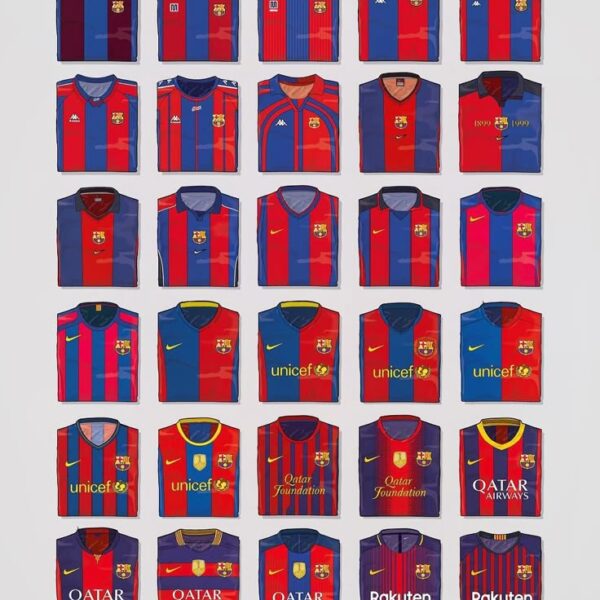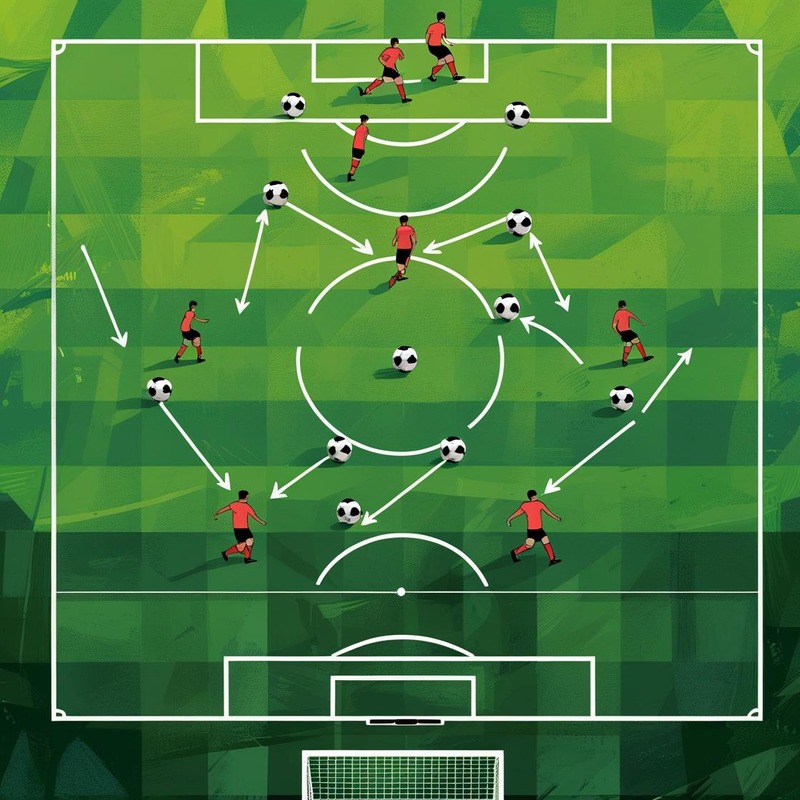Tiki Taka is more than just a football tactic—it’s a philosophy that transformed the beautiful game. Originating in Spain, this intricate style of play prioritizes possession, movement, and precision passing. But what exactly is Tiki Taka, who invented it, how does it work, and what are its strengths and weaknesses? In this article, we’ll explore everything you need to know about Tiki Taka, from its history and core principles to the teams that mastered it and its legacy in modern football.
Introduction: The Tactical Evolution of Tiki-Taka
In the ever-evolving landscape of football tactics, few strategies have had a more profound impact than Tiki Taka. Emerging from the heart of Spanish football, this possession-based playing style changed how the game was perceived and played. Combining technical brilliance, positional intelligence, and relentless passing, Tiki Taka redefined dominance on the pitch. This article delves deep into the origins, mechanics, advantages, and limitations of this iconic football tactic.
What is Tiki-Taka?
Definition and Meaning
Tiki Taka, often stylized as “tiki-taka,” is a Spanish term that refers to a style of play based on short passing, fluid movement, and continuous possession. The term itself was popularized by Spanish sports commentator Andrés Montes, capturing the rhythm and tempo of the ball zipping around the pitch. In tactical terms, it prioritizes patience, precision, and coordinated positional play to control the game’s tempo and space.
Core Principles of Tiki-Taka
The foundation of Tiki Taka lies in ball retention, intelligent movement, and synchronized teamwork. Players operate in tight triangles, always providing multiple passing options. Every pass and movement is calculated to disorganize the opponent while maintaining spatial balance. The goal isn’t just to keep the ball—it’s to manipulate the opposition into creating gaps, then exploit those spaces with incisive final passes.
Who Started Tiki-Taka?
Origins and Influences
While Tiki Taka gained prominence in the 2000s, its conceptual roots trace back to Dutch Total Football of the 1970s. Johan Cruyff, a central figure in Total Football, played a critical role in its evolution. His tenure as both a player and manager at FC Barcelona laid the ideological foundation for Tiki Taka’s future development.

The Architects
Two key figures are widely credited for shaping Tiki Taka into a dominant tactical force: Pep Guardiola and Luis Aragonés. Guardiola implemented and perfected it at FC Barcelona, turning it into the club’s defining identity during 2008–2012. Aragonés, on the other hand, introduced its principles to the Spanish national team during Euro 2008, laying the groundwork for their global success.
What Benefits Does Tiki-Taka Bring?
Positional Dominance and Ball Control
Tiki Taka allows a team to dominate possession, dictate the pace of play, and keep the opponent chasing shadows. This level of control reduces the number of opposition chances and allows teams to assert tactical superiority from the first whistle.
Pressing and Ball Recovery
Another key benefit is immediate ball recovery. When possession is lost, players swarm the ball carrier in coordinated pressing traps—a technique known as “gegenpressing.” This ensures that control is quickly regained, maintaining dominance.
Chance Creation and Goal Opportunities
Through calculated build-up and third-man runs, Tiki Taka creates high-quality chances in advanced positions. By pulling defenders out of position, it opens space in critical areas, allowing for intricate plays that often end in goal-scoring opportunities.
What Are the Disadvantages of Tiki-Taka?
Vulnerability to High Pressing
One of Tiki Taka’s primary weaknesses is its susceptibility to intense pressing. Teams that deploy aggressive, high-tempo pressure can disrupt the passing rhythm, force turnovers, and exploit the open space behind midfielders.
Requires Highly Skilled Players
This tactical approach demands exceptional technical ability, game intelligence, and constant off-the-ball movement. Without top-tier players, the system can collapse or become ineffective, especially under physical pressure.
Predictability and Lack of Directness
In some matches, Tiki Taka becomes overly cautious—favoring safe, lateral passes over direct attacking intent. This can lead to frustration, reduced goal output, and vulnerability to counter-attacks from deep-lying opponents.
Teams and Managers That Use Tiki-Taka
FC Barcelona: The Cradle of Tiki-Taka
No club is more closely associated with Tiki Taka than FC Barcelona. Under Pep Guardiola’s management from 2008 to 2012, Barça played arguably the purest form of this style, winning multiple La Liga titles and two UEFA Champions League trophies. The team’s core—Xavi Hernández, Andrés Iniesta, Sergio Busquets, and Lionel Messi—executed the system with near-perfection, controlling matches through fluid interplay and high pressing.

Spanish National Team
The Spanish national team mirrored Barcelona’s Tiki Taka approach and experienced an era of unmatched dominance. Under Luis Aragonés and later Vicente del Bosque, Spain won Euro 2008, the 2010 FIFA World Cup, and Euro 2012. Their system was built around control and precision, often limiting opponents to minimal possession and few opportunities. The result was one of the most successful runs in international football history.
Other Influenced Managers and Clubs
While Guardiola and the Spanish national team are the flagbearers of Tiki Taka, its influence spread widely. Managers like Mikel Arteta at Arsenal, Erik ten Hag during his time at Ajax, and Julian Nagelsmann at Bayern Munich have all incorporated Tiki Taka-inspired elements. Even Manchester City under Guardiola has evolved into a more vertical version, blending possession with pace and unpredictability.
The Tactical Legacy and Current Status of Tiki-Taka
Decline and Counter-Strategies
Despite its success, Tiki Taka eventually faced challenges. The turning point came at the 2014 FIFA World Cup when Spain suffered a dramatic exit after a 5–1 loss to the Netherlands. Opponents began using physicality, high pressing, and quick counter-attacks to neutralize the methodical buildup of Tiki Taka. The lack of directness and over-reliance on possession began to show vulnerabilities against more athletic and dynamic teams.
Modern Adaptations and Revivals
Though the pure form of Tiki Taka is less prevalent today, its essence lives on in modern tactics. Pep Guardiola, for instance, has modified the approach at Manchester City by integrating verticality, quicker transitions, and tactical flexibility. This “new-age Tiki Taka” still values control but also embraces urgency and adaptability, making it less predictable and more effective against a wider variety of opponents.
Conclusion: Tiki-Taka’s Lasting Impact
Tiki Taka has left an indelible mark on football history. It redefined what it meant to dominate a match—not through physicality or long balls, but through intelligence, space management, and ball mastery. Even though the system has evolved and been challenged, its foundational principles continue to influence top-tier football around the world. In many ways, Tiki Taka wasn’t just a tactic—it was a movement that elevated football into an art form.
Tiki-Taka in Numbers and Stats
Numbers can often illustrate a tactic’s dominance better than words. During their peak, both FC Barcelona and the Spanish national team showcased some of the most impressive stats ever recorded in football:
- Possession: Spain averaged over 65% possession during the 2010 FIFA World Cup, despite scoring only eight goals in seven matches—underscoring their control-first philosophy.
- Pass Completion: FC Barcelona under Guardiola often exceeded 90% pass completion rates in key matches, thanks to their short, high-frequency passing style.
- Passes per Goal: In some matches, Barcelona completed over 800 passes, with up to 20–30 passes leading to a single goal—highlighting the methodical nature of chance creation.
- Player Influence: Xavi Hernández averaged over 100 passes per game with astonishing accuracy, serving as the metronome of both Barça and Spain.
These figures underscore how Tiki Taka wasn’t just about aesthetics—it was quantifiable dominance built on structure, patience, and execution.
Conclusion: The Eternal Influence of Tiki-Taka
Though no longer the invincible force it once was, Tiki Taka’s tactical blueprint remains alive in many modern systems. It shifted global paradigms in coaching, training, and youth development. Even as teams evolve and adapt to faster, more vertical styles, the philosophy of space control, intelligent movement, and relentless precision continues to echo in elite football.
Tiki Taka taught the world that domination isn’t only about scoring more—it’s about owning the game in every phase. As football continues to evolve, its spirit remains embedded in the DNA of every team that chooses to think before it acts and pass before it shoots.

